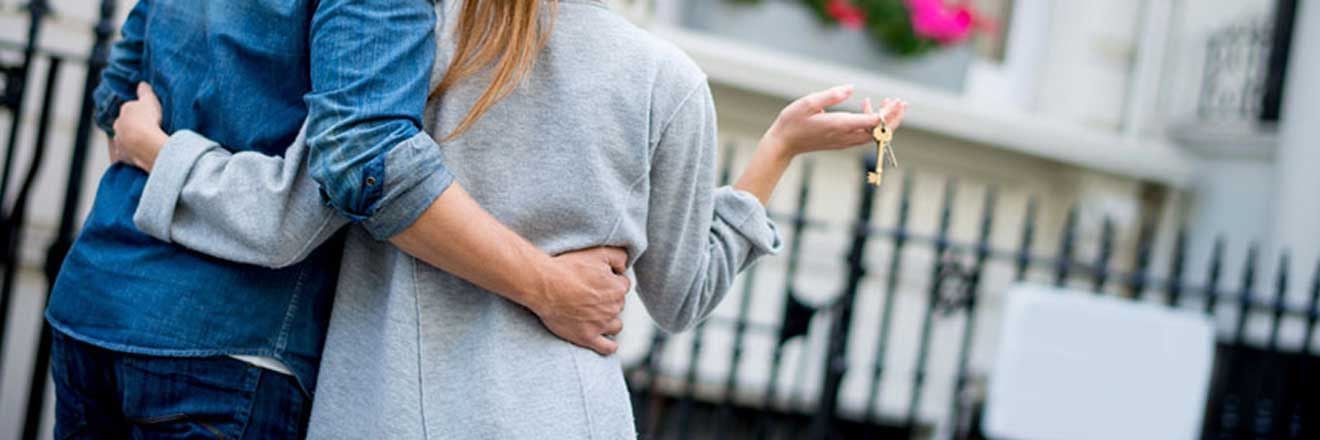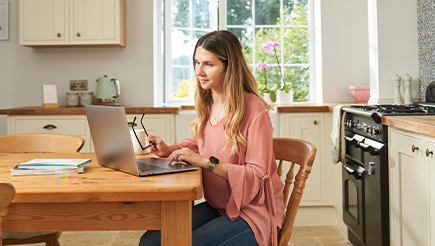Every penny counts when you're a landlord. Even more so when you're in the market looking to add a new buy-to-let to your property portfolio.
From saving up for a deposit and setting aside money to bring the property up to scratch, to factoring in costs for insurance and landlord legislation like energy performance certificates, it's in your best interest to ensure your finances add up as they should so that your hard work is paying off.
One such cost to factor in when you're doing the sums for your landlord life is stamp duty, which is a tax you may need to pay when buying a property.
Read this guide to get up to speed with the ins and outs of stamp duty and the changes to this legislation that should be on your landlord radar.
What is stamp duty?
Stamp duty, otherwise known as Stamp Duty Land Tax (SDLT) is the tax charged on the purchase of property and land in England and Northern Ireland.
Wales and Scotland have similar taxes known as Land Transaction Tax (LTT) and Land and Buildings Transaction Tax (LBTT) respectively. Regardless of names, they all serve the same purpose: to pay a percentage of your property's purchase price to the taxman.
If you purchase a property worth more than £125,000 (or an additional property over £40,000) in England and Northern Ireland, you'll need to pay stamp duty on it.
How is stamp duty calculated?
Stamp duty is calculated as a percentage of the total value of the property you're buying. And given that stamp duty rates are tiered, you'll pay different stamp duty rates depending on your rental property's total cost.
The table below sets out the current standard home mover stamp duty rates in England and Northern Ireland.
Stamp duty rates for home movers
|
Level of property price (England and Northern Ireland) |
% of stamp duty to pay |
|---|---|
| £0 - £125,000 | 0% |
| £125,001 - £250,000 | 2% |
| £250,001 - £925,000 | 5% |
| £925,001 - £1.5m | 10% |
| Over £1.5m | 12% |
First-time buyers purchasing properties don't have to pay stamp duty on properties up to £300,000. A stamp duty of 5% will be charged for properties valued between £300,001 and £500,000.
Those buying a first home worth more than £500,000 will pay stamp duty charged at the standard home mover rates.
Learn how this tax is calculated in Wales and click here for more information on how this legislation operates in Scotland.
What are stamp duty rates for buy-to-let landlords?
When purchasing a property as a buy-to-let landlord, you'll need to pay an extra 3% in stamp duty.
The table below shows the stamp duty rates that buy-to-let landlords currently have to pay when purchasing a property to rent out.
Stamp Duty rates for buy-to-let landlords
|
Level of property price (England and Northern Ireland) |
% of stamp duty to pay |
|---|---|
| £0-£40,000 | 0% |
| £40,001 - £125,000 | 3% |
| £125,001 - £250,000 | 5% |
| £250,001 - £925,000 | 8% |
| £925,001 - £1.5m | 13% |
| Over £1.5m | 15% |
Want to work out how much stamp duty you'll have to pay on that buy-to-let property you've set your sights on? Use Money Advice Service's stamp duty calculator to crunch the numbers.
How do I pay stamp duty?
Stamp duty in England and Northern Ireland is paid to HMRC.
Generally, your solicitor or conveyancer will take care of your stamp duty return for you. All you have to do is transfer the money for the property to your solicitor, who'll make the payment and complete the purchase on your behalf.
Alternatively, you can submit a paper return yourself.
Whatever route you choose, it's your responsibility to ensure that your stamp duty return is submitted on time.
When do I pay stamp duty?
When purchasing a buy-to-let property in England or Northern Ireland, you have 30 days from the transaction date – which is when money changes hands from the buyer to the seller's account – to pay your stamp bill.
If you fail to do this within this timeframe, you'll automatically be hit with a £100 fine.
Are there exemptions to stamp duty for buy-to-let landlords?
If the total price of a property is £40,000 or below, you don't need to pay stamp duty. Below are some other examples of scenarios where you may or may not be exempt from stamp duty as a landlord.
First-time buyers
If you're a first-time buyer investing in a buy-to-let property, you won't have to pay the buy-to-let stamp duty rates. Instead, you'll pay the standard home mover stamp duty rates once you've purchased your property.
Married couples and civil partners
For stamp duty purposes, individuals who are married or in a civil partnership are viewed as the one person. As such, if one person in the relationship already owns a property but they want to buy an additional one as a couple, the higher buy-to-let stamp duty will apply.
Unmarried couples and joint purchases
Planning on buying a property with someone you live with who already owns a property? If you do consider this option, the same rules that apply to married couples and stamp duty apply.
This means that individuals purchasing a property jointly will be treated as one person and will have to pay stamp duty on their property.
The only way to avoid paying higher stamp duty rates would be for the person who doesn't own any properties to purchase it on their own – meaning they'll be the only named person on the mortgage and property deeds.
How do I pay stamp duty in Wales?
Land Transaction Tax (LTT) is the Welsh equivalent of the stamp duty tax that property buyers pay in England and Northern Ireland. This tax was brought into play after this tax was devolved to Wales from the Westminster government in 2018.
LTT is collected by the Welsh Revenue Authority (WRA). Your solicitor can take care of the LTT return while they're managing the property transaction, but it's your responsibility to make sure it's submitted and paid to the Welsh Revenue Authority with 30 days of the sale completion date.
Like with stamp duty, landlords purchasing buy-to-let properties in Wales are charged 3% more than the standard homebuyer LTT rates.
See the LTT rates for buy-to-let landlords below.
Land Transaction Tax (LTT) rates for buy-to-let landlords
|
Level of property price (Wales) |
% of LTT to pay |
|---|---|
| £0 - £180,000 | 3% |
| £180,001 - £250,000 | 6.5% |
| £250,001 - £400,000 | 8% |
| £400,001 - £750,000 | 10.5% |
| £750,001 - £1.5m | 13% |
| Over £1.5m | 15% |
First-time buyers purchasing buy-to-let properties will be charged the standard homebuyer LTT rates, which means they avoid having to pay the buy-to-let surcharge.
Also, if for whatever reason you have to sell your home and the buy-to-let property you've paid higher rates on becomes your main residence within 3 years of purchasing it, you can claim a refund on these higher tax rates.
Use the Welsh Revenue Authority's calculator to work out how much LTT you owe on your buy-to-let property.
How do I pay stamp duty in Scotland?
Land and Buildings Transaction Tax (LBBT) is what buyers need to pay when purchasing a property in Scotland. It replaced stamp duty in 2015 when this tax was devolved from the Westminster to the Scottish Government.
You need to return and pay your LBTT to Revenue Scotland within 30 days of the sale being completed. The amount owed must be paid at the same time you file your return, which can be submitted online or by post.
Failure to pay on time means you may be fined and your property purchase won't be registered until the money is transferred.
If you're a landlord purchasing a buy-to-let property in Scotland, you'll need to pay an 'additional dwelling supplement'. This means that you'll be charged an extra 4% on top of the standard LBTT rates – this was previously 3% until January 2019.
The LBTT rates for buy-to-let landlords are below.
Land and Buildings Transaction Tax rates for buy-to-let landlords
|
Level of property price (Scotland) |
% of LBTT to pay |
|---|---|
| £0 - £40,000 | 0% |
| £40,000 - £145,000 | 3% |
| £145,001 - £250,000 | 5% |
| £250,001 - £325,000 | 8% |
| £325,001 - £750,000 | 13% |
| Over £750,001 | 15% |
Use Revenue Scotland's online calculator to work out the LBTT you would have to pay on a buy-to-let property that's caught your eye.
Stamp duty tax doesn't have to be taxing. The earlier you prepare, the easier it is to include in your landlord costs from the offset. Just make sure that you apply the correct stamp duty rate depending on where the property you're purchasing is based. That way you'll know that everything totals up as it should, letting you focus on reaping the financial benefits of your hard work.


